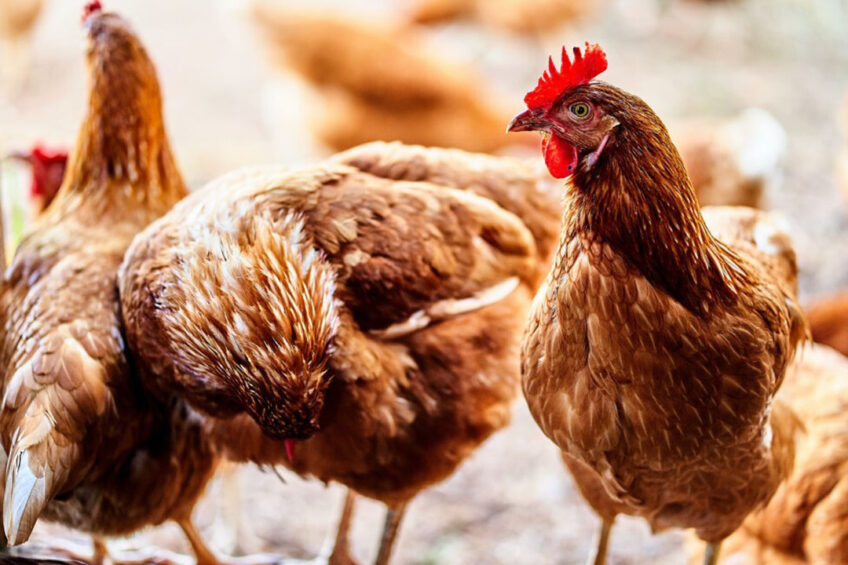Beta testing new National Environmental Sustainability Tool

The National Environmental Sustainability Tool (NEST) was developed by Egg Farmers of Canada to encourage further progress in lessening environmental impacts and the adoption of new, green technologies.
Several years in the making, the beta version of the National Environmental Sustainability Tool was recently released by Egg Farmers of Canada. This innovative online system is designed to empower Canadian egg farmers to measure, monitor and manage the environmental footprint of their farms. By completing the ‘sustainability assessment’ in NEST, egg farmers can better understand key drivers of environmental performance on their farms – energy and water use, and more – while also exploring comparisons to farms in their region and across the country.

Egg Farmers of Canada CEO, Tim Lambert, notes that over the last 5 decades, egg production in Canada has already made substantial progress in reducing greenhouse gas emissions and use of water, land and energy. Now, NEST will enable egg farmers to go further.
Create action plans
In NEST, egg farmers will have access to the latest agricultural sustainability research and the ability to create an action plan, set sustainability goals, track farm progress and more.
Dr Nathan Pelletier, EFC research chair in sustainability at the University of British Columbia-Okanagan, whose team worked with EFC in developing NEST, adds that future versions of NEST will harness the “massive amounts of data” on energy, feed, water use and other farm performance attributes that’s collected by automated digital barn and farm management systems on Canadian egg farms, along with farm operating parameters and conditions.
NEST anonymously aggregates the data that the farmers provide so that egg farmers can see where they fit into the broader spectrum of sustainability performance across the sector while their confidentiality is protected. Both Lambert and Pelletier provided Poultry World with further details about NEST.
What is the spectrum of the specific sustainability metrics that can be measured and compared within the tool?

Pelletier: “This first version of NEST focuses on farm performance metrics like hen productivity, feed use (e.g., feed conversion rate), water use, energy use (e.g., type and amount of energy used, including diesel, natural gas, solar, etc.) and manure management. The next release of NEST will support farm-specific measurement of environmental footprints, such as carbon footprint, and provide the capacity to estimate footprint reductions that can be achieved by adopting farm-appropriate green technologies.”
Tell us about how the sustainability assessment works.
Pelletier: “It’s organised into 28 questions, asking egg farmers to provide measurements for a complete flock cycle on how much and what type of energy is used per flock, what kind of insulation the barn has, what kind of lighting is used, how manure is stored, how much water was used, and so on. Once all the data has been entered, egg farmers can see how their measurements stack up against other egg farms and access information on improving these outcomes.
They are given scorecards that show the assessment results and how their farm compares nationally and regionally. From there, the action plan function in NEST enables egg farmers to set specific goals for things like feed consumption, water and energy use, among other factors. Egg farmers can identify their own goals, or can follow recommended research-based goals that are determined based on their specific sustainability assessment results, in either case guiding farms toward higher levels of sustainability.”
You’ve stated that NEST enables egg farmers to remain at the forefront of implementing green technologies and innovations. How so?
Pelletier: “Green technologies continue to emerge and evolve, and knowing which technology makes the most sense – both environmentally and economically – for any given farm is often not straightforward. For example, when choosing between renewable energy systems, such as wind or solar power installations, it’s important to know the local availability of the renewable energy source, the benefits of replacing electricity from the provincial electricity grid (which varies widely by province), the installation and maintenance costs, and the availability of specific incentives or rebates. With NEST, we aim to make these decisions easy for farmers by providing them with the necessary information.”
How will the anonymous aggregation of the information collected in NEST be used, other than for reporting to the public?
Pelletier: “In addition to providing current and representative benchmarks for egg farmers, the data collected through NEST will also be used to monitor how the industry is evolving over time. This will indeed enable EFC to report on trends within the industry and position Canadian eggs in the protein source market on the basis of sustainability attributes. The data can also be used to potentially develop programmes or initiatives to support targeted sustainability improvements across the industry. As more and more egg farmers use NEST and contribute data to the aggregated data pool, this expanded data set will also open up opportunities for using advanced machine learning and predictive analytic techniques to identify key technologies and management practices that support more sustainable outcomes.”
What uptake do you expect in terms of participation? How will you encourage it?
Lambert: “We anticipate that egg farmers will find NEST to be easy to use, providing them with essential sustainability information. To encourage adoption, EFC is working closely with Canada’s provincial egg boards to provide farmers at a local level with information about NEST. Participants are assured that the data collected by NEST will always be made anonymous.”
Tell us about future versions of NEST?
Pelletier: “The first full version of NEST, called Full NEST, enables farms to identify which systems make the most sense environmentally (for example, to reduce their carbon footprint). Subsequent versions of NEST will integrate cost and other information to help egg farmers make even more informed choices.
“In the short term, NEST will contain information about both renewable energy systems and manure waste-to-energy valorisation systems while subsequent versions will also include information on new technologies, like manure pelleting, pyrolysis, as well as both passive and active geothermal systems for heating and cooling barns. More specifically, future versions of NEST will also include regional and farm-specific estimates of costs and economic payback times for specific green technology systems, so that farmers can make informed decisions taking into account the economic viability of different sustainability technologies and practices for their farms in terms of the environmental sustainability benefits.
“Future versions of the tool will also integrate animal welfare data, enabling farmers to benchmark against housing system-specific industry performance for a variety of key welfare indicators, such as foot and feather condition, disease incidence, mortality rates, etc.”
NEST is currently available to all registered Canadian egg farmers who can access the tool at eggsustainability.ca. For more information about Egg Farmers of Canada’s commitment to and focus on sustainability, read the organisation’s inaugural Sustainability Report.









